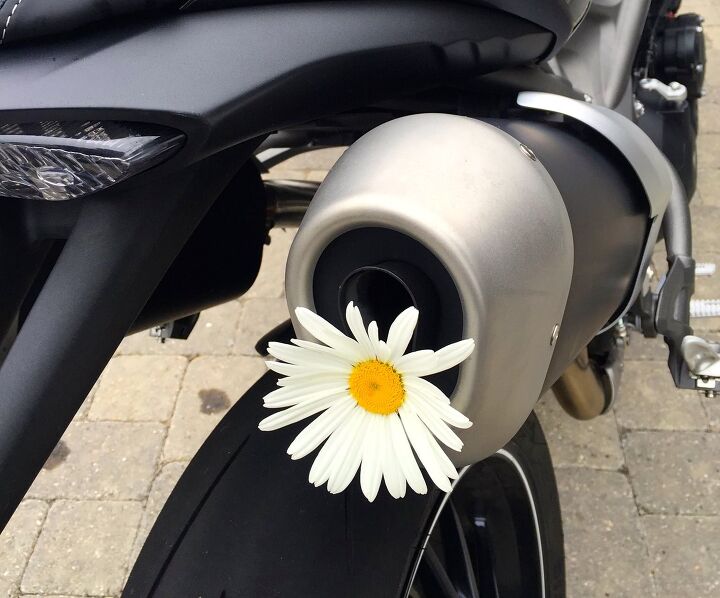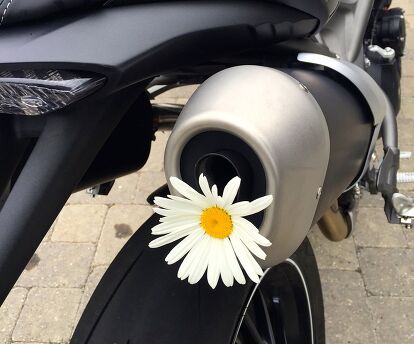What's Up With Snatchy, Abrupt Throttles?

Ask MO Anything: And Why do the Euro Bikes come out smelling like a rose?
Greetings MO!
Once again, I commend your publication as being my primary source of all things two-wheeled. Keep up the excellent, objective journalism.
Now to my question: Looking at the latest round of superbikes (as an example, though it seems that this has been an issue for some time), it seems that the European manufacturers (generally) are able to get not only pretty excellent torque curves on the dyno with no major dips, they also seem to (again as a general rule) have better off/on throttle fueling than their Japanese counterparts. I understand that torque curves are determined by a huge variety of factors and I don’t want you to explain all that, but the off/on fueling of certain bikes (such as the current R1) has been repeatedly and widely criticized as being too snatchy, presumably due to lean fueling. I’ve heard both of these issues being explained as being due to having to meet emission regulations. However, the European bikes have to comply with these same regulations. So what gives? How are these differences really explained/justified by manufacturers and why are some better able to deal with emissions restrictions than others?
Thanks so much for your time.
Kyle
Dear Kyle,
Thanks for the praise and for the question. The short answer is: We’re not sure. There are some questions the manufacturers are happy to answer. Questions about adherence to government rules doesn’t seem to be one of them. Sometimes you’ll hear hints that all the manufacturers are on the honor system, and that their motorcycles never actually get tested. Other OEMs tell us (off the record), oh yes, the tests are very real.
The EPA says it has “stringent emission standards for highway motorcycles that have been developed and refined for over 30 years. Motorcycles are regulated under section 202 of the Clean Air Act which calls for EPA to consider the need to achieve equivalent emission reductions from both motorcycles and other vehicles as much as possible.”
Read section 202 here if you’ve got a few days. Whatever the latest U.S. federal emissions guidelines are, all motorcycles sold in Europe are phasing in Euro-4 requirements as we speak, which are about as strict as California’s CARB emissions requirements – the strictest in the U.S. – in regard to reducing pollution, and this includes the evaporative emissions canisters seen on California bikes for several years.
We learned a little about all this from MV Agusta’s Research and Development Director Brian Gillen a couple of years ago, when he talked about getting that company’s Rivale ready for prime time. “Due to various legal requirements and fuel specs around the world, that bike needed 32 distinct fuel maps worked out before it was ready for worldwide release (and that was before Euro 4, which required the new Brutale emit 30% less pollution and 5 decibels less racket). ABS is the same deal, and now it’s mandatory in Europe: Each motorcycle’s ABS mapping is unique, and needs to be programmed to work with its center of gravity, weight distribution, and a host of other factors.”
And now there are lean-sensitive ABS and IMUs to deal with, too. Basically, there’s a whole lot of computer programming going on, and since you brought up on/off throttle snatchiness, it occurred to me that there were very few complaints about that on any of the seven bikes in our recent 2017 Superbike Street Shootout, or in the track portion of that same seven-bike slugfest – and a couple of MO’s test riders are hyper-sensitive to abrupt throttle response.
The R1 still came in for a bit of abuse in Mode A, as did the GSX-R’s Mode A, but throttle snatchiness wasn’t an issue when stepping down a mode, which still delivered the same peak power when fully pinned. The more time the OEMs have to perfect their bikes’ fueling and other computer-controlled systems, the better they seem to work. Lots of ride-by-wire bikes used to be jerky; now the roles seem to be reversed; the fluidity of the latest R-b-W bikes make throttle take-up on some of the old cable-controlled ones feel more pronounced.
At the end of the day, though, most bikes we get to test seem to run better than ever, even on 91 octane with 10% ethanol and ever-more stringent government regulations to make them greener and quieter.
Send your moto-related questions to AskMOAnything@motorcycle.com. If we can’t answer them, we’ll at least make you feel temporarily better by thinking you’re talking to somebody who knows what they’re talking about. Even if we don’t. It’s the thought that counts.
Recent Ask MOs:
Why are there no Ducatis at the Isle of Man?
Why Won’t My Motorcycle Engine Rev To Redline?
Why Are My Brakes Still Mushy?

Motorcycle.com presents an unrivaled combination of bike reviews and news written by industry experts
More by Motorcycle.com Staff































Comments
Join the conversation
I recently bought a used VFR1200F '10. This bike's throttle response was f*ng nuts! (btw, Kevin, where the hell did you mention that in your review? "A slight abruptness during throttle pick-up is a minor foible" is how you call that?..). That is why I dove deep into this question, so let me explain.
My bike has one of the earliest TbW systems + it is restricted in 1st and 2d gears. This makes the problem particularly pronounced.
Look at the graph below. This is 2d gear. Same thing with the 1st.
https://uploads.disquscdn.c...
Red lines show how bike comes from the factory, black - how it should be coming.
The bike was literally unrideable and plainly dangerous in town. It surged like a mad arabian horse. Slow cornering had to be done only while trailbraking and covering the clutch.
Bike has 7 different maps for each gear + N. So I partially cured the problem by fooling the ECU into thinking that the bike is always in 3d gear or higher. The difference was night and day.
Now, why am I talking about restrictions? Because together with snatchy throttle it's all about fuel mapping and emissions standards. All those terrible things are done under the sauce of "helping us tame the bike" and "saving the planet".
And the biggest enemy is so-called Fuel Cut in closed throttle conditions. Most modern FI vehicles do that to meet strict regulations. This makes reapplying the throttle very noticeable, in part because the intake manifold dries off, in part simply because the difference in amounts of fuel supplied is larger.
How european bikes manage to better cope with this problem? There are gates which are opened to some. You know, diesel gates...
A 30% reduction sounds like a big accomplishment but it's only 30% of the last reduction amount, right? At what point do we arrive at a place where the cost of the next reduction outweighs the benefit of said reduction? I think this should be discussed and agreed upon before any more "reductions" are passed into law. The wonderful engineering that continuously allows us to pursue the last decimal place of emissions reduction is certainly not free (to say nothing of the greatly increased complexity of the machines). The law of diminishing returns should be considered or are we just buying time until they can perfect the electric motorcycle?